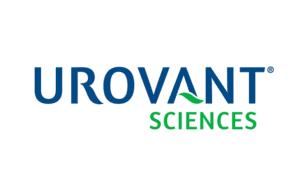 Urovant’s Gemtesa (vibegron) was the subject of two presentations at the Annual Meeting of the American Urological Association (AUA2021).
Urovant’s Gemtesa (vibegron) was the subject of two presentations at the Annual Meeting of the American Urological Association (AUA2021).
The first explained that vibegron is effective in patients with ‘dry’ overactive bladder (OAB) based on a post-hoc analysis of the pivotal EMPOWUR trial. The second presentation explained that vibegron had a negligible impact on ambulatory blood pressure in a randomized, double-blind, placebo-controlled study.
Vibegron, a beta-3 agonist, stands out in a market of overactive bladder drugs that are primarily antimuscarinics. “There’s only one other beta-3 agonist on the market,” said Dr. David Staskin, who was the international lead investigator in the EMPOWUR trial.
The drug is also unique in that its label includes data on urgency associated with OAB. “It’s the first time [urgency] has ever been in a package insert for any overactive bladder drug,” said Staskin, who is also an associate professor of urology at Tufts University School of Medicine.
“The syndrome is urgency, frequency, with or without incontinence,” Staskin explained. For that reason, ‘urgency’ is commonly mentioned on the labels of OAB drugs. But vibegron is the first to win FDA’s backing to have graphics and data associated with urgency on the label. “The Phase 3 study [for vibegron] was very robust,” Staskin said. “The patients used an electronic diary to answer urge questions that were very specific.”
One of the two AUA2021 vibegron presentations focused on patients with ‘dry’ OAB based on a post-hoc analysis of data from the pivotal EMPOWUR study. Roughly one-quarter of participants in the EMPOWUR study had so-called OAB dry, which involves frequency and urgency but not incontinence. “So, the question for doctors is, ‘I have someone who came into my office the other day, and he or she has frequency and urgency and is getting up at night, but they don’t have accidents. Will the drug work for the OAB dry population as well as the OAB wet population?’” Staskin asked. “And this analysis showed that the answer was ‘yes, the drug works equally and OAB wet and OAB dry.’”
In the pivotal EMPOWUR study, vibegron led to a 60% reduction in urge incontinence episodes, which points to its efficacy, Staskin said. “If a drug is to exceed 1.5 times the placebo response within the first three months, it is considered very good,” he said. “That’s where the drug ended up actually almost mathematically at 1.5 times.”
After winning FDA approval in late 2020, vibegron hit the U.S. market in April.